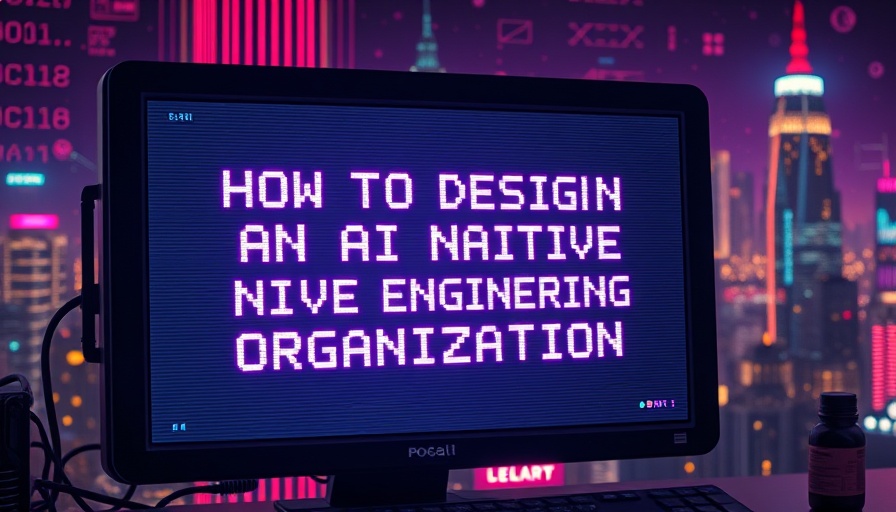
Understanding the Shift Towards AI Native Engineering
As we delve into the contemporary business landscape, one thing becomes increasingly clear: the need for AI native engineering organizations is paramount. Businesses today must embrace the integration of artificial intelligence not merely as a tool but as a foundational pillar in their structural design. This paradigm shift signifies a departure from traditional engineering models to one that thrives on automation, adaptability, and innovative thinking.
In 'How to Design an AI Native Engineering Organization', the discussion dives into the pivotal role AI plays in shaping modern business, exploring key insights that sparked deeper analysis on our end.
The Benefits of AI Integration
For business owners, understanding how to create an AI native organization presents profound opportunities. Integrating artificial intelligence into the core of your operations can lead to enhanced efficiency, better data management, and a more agile response to market changes. Acknowledging and harnessing the potential of AI can yield significant competitive advantages. In an era where data reigns supreme, companies that effectively utilize artificial intelligence will set themselves apart by wielding insights that drive strategic decision-making.
Key Strategies for Design
Designing an AI native engineering organization requires employing specific strategies that marry technological innovation with operational goals. Begin by fostering an environment that encourages collaboration between technology teams and business units. This collaboration is essential for understanding how AI can solve real-world problems.
Additionally, training employees on AI tools and methodologies ensures that the workforce is equipped to leverage these advancements. Fostering a culture of continuous learning will empower your teams to innovate and adapt as technology continues to evolve. Furthermore, establishing clear metrics for success will help measure the impact of AI on your organization.
Real-World Examples of Successful AI Integration
Many industry leaders exemplify the successful transition towards AI native organizations. Companies like Amazon and Google have effectively integrated AI into their operations, resulting in increased efficiency and enhanced customer experiences. Their ability to analyze consumer data and adapt services in real-time showcases the transformative power of AI in action.
These companies serve as models for smaller businesses seeking to adopt similar strategies. They illustrate that with thoughtful planning and execution, organizations can realize substantial gains in efficiency and profitability through AI integration.
The Road Ahead: Future Trends in AI Native Design
The future landscape of AI native engineering design is poised for rapid evolution. Predictions suggest a stronger focus on ethical AI usage, data privacy, and equitable access to AI technologies. Business owners must stay abreast of these trends to ensure their organizations are prepared for the challenges and opportunities that lie ahead.
Moreover, the conversation surrounding AI will grow more nuanced, emphasizing collaboration between AI systems and human input, not substitution. Engaging employees in this discourse will foster greater acceptance and integration of AI into your organizational culture.
Actionable Insights for Business Owners
As we navigate the journey towards embracing AI, actionable insights become critical. Business owners should start assessing their current systems and identifying areas where AI integration could yield the most benefit. This assessment may involve investing in specialized AI training for teams, seeking partnerships with technology innovators, and exploring AI-driven tools that can streamline processes.
Moreover, it is paramount to emphasize the importance of data quality—without clean, actionable data, the potential of AI remains untapped. Establishing robust data collection and management protocols will empower your organization to leverage AI effectively.
Conclusion: Don’t Wait to Leap into AI
With the immense potential that AI holds for transforming business operations, the message to business owners is clear: there’s no time like the present to begin integrating AI into your organization. As we've explored in the discussion on How to Design an AI Native Engineering Organization, the approaches and insights shared provide a roadmap for making informed decisions. If you’re ready to seize the competitive edge, START USING AI NOW.
 Add Row
Add Row  Add
Add 




Write A Comment